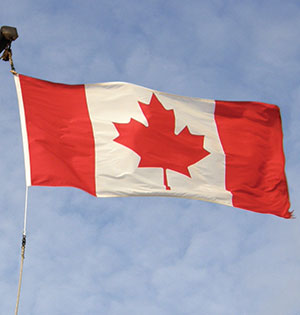Lutheran Church–Canada and the 2011 National Household Survey
NOTE: The Canadian Lutheran reported in May the new numbers on religious affiliation in Canada. Now Ian Adnams explains what they mean for Lutheran Church–Canada.
by Ian Adnams
 The release in May of the National Household Survey (NHS) data from Statistics Canada on the country’s religious life likely caused few surprises for major churches. Much of the data confirmed what they already knew from internal observations and statistics: membership and denominational identification is declining. Despite the decline, more than two-thirds of Canadians (67.3%) identify themselves with Christianity.
The release in May of the National Household Survey (NHS) data from Statistics Canada on the country’s religious life likely caused few surprises for major churches. Much of the data confirmed what they already knew from internal observations and statistics: membership and denominational identification is declining. Despite the decline, more than two-thirds of Canadians (67.3%) identify themselves with Christianity.
For Lutherans, the NHS shows a decline of 21 percent over the past ten years. In 2001 more than 606,000 Canadians self-identified as Lutheran. That number now stands at slightly more than 478,000. There are now more than twice as many Muslims in Canada as Lutherans.
Over the same period, 2001-2011, Lutheran Church–Canada’s baptised membership declined about 16 percent, from 79,154 to 66,391. Giving to LCC increased over the ten years by 14.02 percent, but with inflation of almost 22.5 percent over the decade, the church is now working with fewer dollars.
In reporting the NHS survey results, news media drew attention to the increase in the number of people who declared themselves to be religiously unaffiliated. This category increased by more than 63 percent, from 4.7 million in 2001 to 7.8 million in 2011.
By cross-referencing the religion data with immigration patterns since 1971, the NHS researchers showed that almost 80 percent of those with no affiliation with religion were born in Canada. This reflects the same observation made by sociologist Reginald W. Bibby in his free online book “A New Day: the resilience and restructuring of religion on Canada”. He noted: “Between 2005 and 2010, 5 in 10 [immigrants](50%) arrived as Catholics or Protestants. About 3 in 10 (30%) identified with other major faiths, while the remaining … reported they had no religion.”
However, in two denominations now similar in size to Lutherans, immigration accounts for some of their increase in membership. Currently, immigrants since 1971 comprise 33 percent of Pentecostals and 25 percent of Presbyterians. Immigrant Lutheran population sits at 22 percent with most of the immigration occurring prior to 1971. For the Presbyterians and Pentecostals, their biggest increase of new Canadian members was between 2001 and 2011.
“Although Christianity is still the most dominant religion in Canada, there is no doubt we are witnessing great changes in our society,” noted Rev. Dr. Leonardo Neitzel, missions executive for Lutheran Church–Canada. “This is why it is so exciting to see the preparation and ordination of pastors who are dedicated to serving their own cultural communities. This is the future of our church!”
Dr. Neitzel also emphasized the importance of keeping LCC congregations focused on their mission by understanding their communities and finding ways to connect with people. “There are many ways to keep ourselves equipped for outreach such as attending events like Reach Out Canada in July and East District’s Evangelfest.” He noted that “the message of the Gospel never changes, but we need training and information that will make us effective witnesses to God’s love for everyone in Jesus Christ.”
The report on Religion in Canada is available on the Statistics Canada website.
———————
Ian Adnams is former editor of The Canadian Lutheran.





